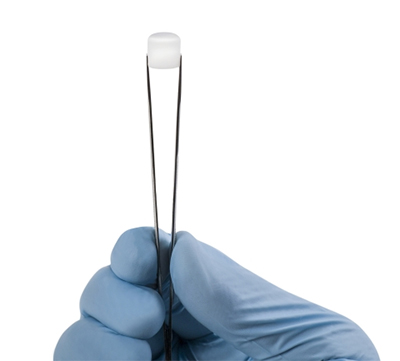
Osteoarthritis is a gradual breakdown of cartilage in the joints that results from wear and overuse. It can occur in any joint and causes a lot of pain. When it occurs in the joint of the big toe known as the metatarsophalangeal joint, it can severely impact a person’s mobility and lifestyle. The Center’s orthopedic surgeons that specialize in foot and ankle conditions are now offering a solution that can help patients suffering from toe arthritis, also known as hallux rigidus, that want to keep their foot’s motion and relieve pain.
Using an implant called Cartiva, the orthopedic surgeon is able to make a small incision on the top of the toe and remove damaged bone in the toe joint. The gel-like implant is placed into a small hole in the bone and secured with cement or glue. The implant is made of a smooth organic polymer (plastic) that functions similar to cartilage. It provides a smooth, slippery, weight-bearing surface for the joint. Immediately following surgery, your foot will begin bearing weight in order to regain range of motion.
“I was seeking a better treatment option for my active patients suffering from toe arthritis that wanted to retain their range of motion in their toe joint and return to activities again,” said Jay Moore, MD. “My patients say this implant has helped them get their life back. In some cases, their range of motion has actually improved over their pre-osteoarthritis state.”
The recovery from the implant procedure requires the patient to wear a soft boot for 2-3 weeks. After a follow-up visit to their orthopedic surgeon, the patient begins physical therapy or a home exercise program. Doing range of motion exercises helps prevent scarring and achieve optimal results. Patients can begin to resume normal activities 5-6 weeks after surgery in normal footwear.
Fusion has been the most common treatment for this condition in the past, it is very reliable in relieving pain. In this surgical procedure, the bones of the big toe are attached with a plate and screws. In most people, the operation is very successful and pain relief is achieved. However, your toes are designed for movement and the range of motion becomes limited. The recovery takes longer, patients cannot do weight bearing activities immediately after surgery and must wear a special shoe for up to six weeks after the procedure.
“Fusion is still an option for patients if the implant needs to be removed,” noted Dr. Moore. “Although my patients have been very happy with the results thus far, it’s important to know there are additional measures we can take if needed.”
Other treatment options for toe osteoarthritis include total joint replacement, hemi-arthroplasty, and cheilectomy. Each treatment has risks and benefits that you should discuss with your doctor if you have this condition.





